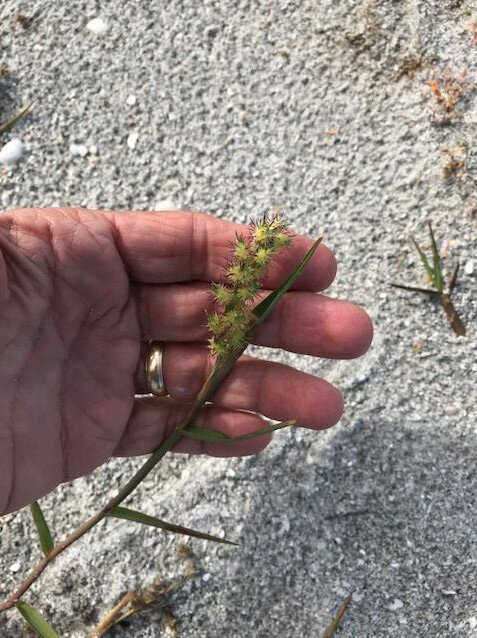Nature Near You is our offering to the community, If you would like to support our efforts, any donation is welcome. Please click the button below to contribute.
Animals search for food, water, shelter and room to raise their young. If you can provide one of these, and do it correctly, your backyard will become a beautiful and educational “wildlife sanctuary”.
We are in the middle of bird migration season and supplying these adventurous birds with food for their long journey will help them focus on the hundreds of miles they have left to go. After migration season, comes the breeding season and when the populations boom in the summer, food resources are at a greater demand.
Orange Peel Bird Feeder
By: Kealy McNeal
A bird feeder gives us the opportunity to observe the wonders of nature in our own backyards. Since, most of us are confined to our houses, birding might be an easy hobby to pick up. Access to feeders can help you learn to identify bird species and understand their behaviors.
We are in the middle of bird migration season and supplying these adventurous birds with food for their long journey will help them focus on the hundreds of miles they have left to go. After migration season, comes the breeding season and when the populations boom in the summer, food resources are put at a greater demand. The more you feed the birds during nesting season, the less time the parents will need to stay away from the nest.
Step 1
Cut orange in half and using a spoon remove the fleshy fruit - this should just leave the peel once completed.
Step 2
Using the dowels or sticks, poke both through the orange out the other side of the orange crossing in the middle.
Step 3
Next, cut four equal size pieces of yarn or twine approximately 1.5 feet long. Tie one end of the yarn to each side of the dowel.
Step 4
Lastly, fill the orange cup with bird seed and hang in a tree within viewing distance.




Bonus!
Use the other half of your orange to make a natural citrus candle!
Procedure
1. Using your thumb, gently separate the segments of orange from the peel. Being very careful to leave the center stem intact and lift out the fruit segments.
2. You will be left with a beautiful and leak-proof orange peel bowl which has its own natural "wick" extending upwards from the center.
3. Fill the bowl of the orange three-quarters full with cooking oil. Using a spoon, drizzle the oil over the wick until it is thoroughly soaked.
4. Light your natural citrus candle!
Seed dispersal by birds
By: Kealy McNeal
Seed dispersal is an important aspect of plant reproduction. If not suitably dispersed, seeds will germinate very close to their parent plant. This means that the seedlings must compete with one another and the parent plant for space, light, water and nutrients. Since plants can’t migrate, they have to rely on a little help from wind, animals, or water to spread their seeds. Seed shape and characteristics help determine the best method. Due to their ability to traverse vast distances in short periods of time, birds are perhaps plants’ most reliable friend, when it comes to seed dispersal.
Plants advertise their seeds to birds by providing colorful, energy-filled fruits or large nuts as a food source. Plants such as the bird cherry have changed over time along with birds, reaching a point where their seeds require a pass through a bird’s digestive system to help them prepare for germination. Birds can disperse seeds three ways:
1. The Bird’s Body
Seeds may attach to the feathers of birds through structures on the seed, such as small hooks or barbs. Birds may disperse seeds, such as those from the mistletoe or pittosporum plant, by carrying them on their beaks after feeding. Both plants have seeds covered in a sticky substance; birds wipe their beaks on a branch to rid themselves of the seeds, allowing the plant to travel great distances.
2. The Bird’s Poop
In some cases, birds do not digest and receive energy from the seeds they consume. Instead, they seek the fruits and berries surrounding the seeds, and the seeds come along with the package. Birds ingest the flavorful pulp; the seeds inside the pulp then move through the birds’ digestive systems and are passed out along with their droppings. The poop gives seeds a small dose of fertilizer.
3. In the Bird’s Beak or Claws
Birds may carry seeds to a new location in their beaks or claws. A bird may be planning a meal or building a nest, and fly off with a seed or fruit to a safe area. Along the way, the bird may drop whole fruits or a few seeds, allowing them to reach new spots, far from the parent plants. Because birds can fly around barriers and slip into small spaces, they may carry seed to places where larger animals and the action of the wind or water may not.



additional cool resources
Bird feeders are not one-size fits all, different birds are attracted to different designs and feeds. Read more about what feeder will be best for your backyard.
Can’t get enough of birds?
Check out our field guide for terns of SW Florida.














